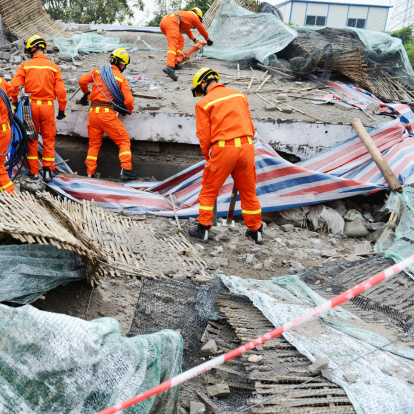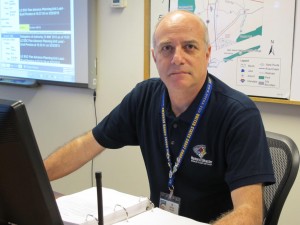This article is part of a series focusing on individuals who dedicate their careers to serving the public in honor of Public Service Recognition Week.
George Navarini is the director of emergency management at the Society of St. Vincent de Paul for the Archdiocese of Miami, Florida. He is also an adjunct faculty member at FEMA’s National Emergency Training Center, Emergency Management Institute. He has been involved in emergency management, as both a professional and a volunteer, for more than 40 years.
In November 2015, George graduated with a master’s degree in Emergency and Disaster Management from American Military University.
We asked George why he chose a career in public service and how his work in emergency management helps others.
What inspired you to pursue this career?
I was inspired to get involved in emergency management as a way to give back to my community, state and nation. This career really gave me the ability to save lives and relieve people’s suffering after a disaster. In short, I wanted to make a difference.
What do you wish you knew before going into this field?
I didn’t know how rewarding this career would be, and I don’t mean in the sense of making a ton of money. It’s incredibly rewarding to help people in your community as well as communities around the world.
Emergency managers have a direct impact on people’s lives before, during, and after a disaster. They provide comfort to people before disaster strikes by providing guidance and education about preparedness. We really do make a difference: one community, one neighborhood, one family and one person at a time.
Is there a moment or incident that you reflect upon fondly as being highly representative of why you pursued emergency management in the first place?
As a young boy, I vividly recall hurricanes Donna, Cleo and Betsy. My father worked all day at Miami International Airport securing aircraft then he came home to prepare our house for the storm. I remember watching him struggle to make last-minute preparations so we didn’t lose everything.
We didn’t know better back then, but we did things like tape our windows with masking tape to keep glass shards from flying into the house if the windows broke. I watched the sky darken and heard the rain and wind lash at the house. It was terrifying, yet fascinating .
What really made an impact on my career came much later with another hurricane. Hurricane Andrew devastated much of Miami-Dade County, including my family’s aerospace company.
A few days after the hurricane hit, I spent many long days cleaning up debris and clearing the street in front of our company’s building so the electric company could get in to re-string power lines.
I remember seeing a dilapidated school bus slowly go by. It was painted a faded blue and had definitely seen better days. Through its cracked and dirty windows, I could see this old bus was being used as a cargo transport and was loaded with all sorts of things. However, it was the hand-painted sign affixed to its sides that caused me to well up:
“For our brothers and sisters in Miami
– from your brothers and sisters in Appalachia”
This was stark evidence of the very best our nation has to offer: the outstretched hand of neighbor helping neighbor. Here was one of the most affluent communities in the U.S. being helped by one of the nation’s poorest areas. But, Appalachia certainly wasn’t impoverished in its dedication to humanity and its desire to help its fellow man.
This small event—lasting perhaps no more than a minute or two—became permanently etched in my mind. I often share it with students in my classes, but never without tearing up. This simple gesture will always remind me of the nobility of what we do as emergency management professionals.
What advice would you give others pursuing a similar career?
I have many lessons I tell those interested in pursuing a career in emergency management:
- Don’t wait until you have a “paying” job to get involved! Take every opportunity to gain valuable experience through volunteer work.
- Even if you are already involved through any of the emergency services, make the time to get involved in another aspect of emergency management to round out and broaden your experiences and skillsets.
- Always remember there are five mission areas in modern emergency management, and response is only one of them. Get involved and get knowledgeable in ALL of them. You never know where or what you may be tasked to do and do well.
- Get your initial training and experience during “blue sky” (normal, every-day operations). Never pass up on a training and exercise opportunity! Trying to do “on-the-job” training during “gray skies” (disaster operations) is rarely effective, and forces you to improvise when you don’t really have the experience to do so.
- Get your credentials! Just as important as earning your academic degrees, take the time to earn your credential as a Certified Emergency Manager (CEM) or Association Emergency Manager (AEM). Join the International Association of Emergency Managers (IAEM) as well as your state emergency management organization.
- Take advantage of the training and networking opportunities available to you through these associations. If you are an emergency management student, join your IAEM student chapter or form one if your university doesn’t have one. Get involved and constantly be honing your skills.
To learn more about George’s career and educational journey, please read his article:


Comments are closed.